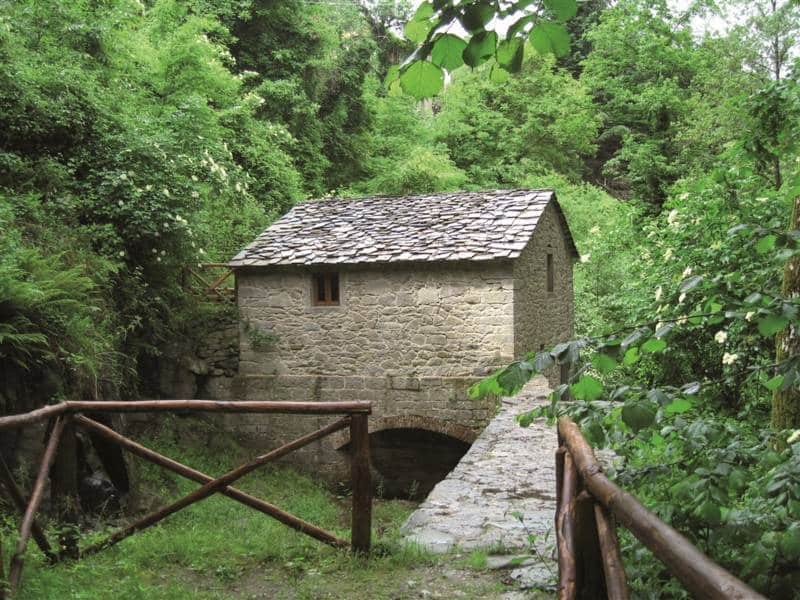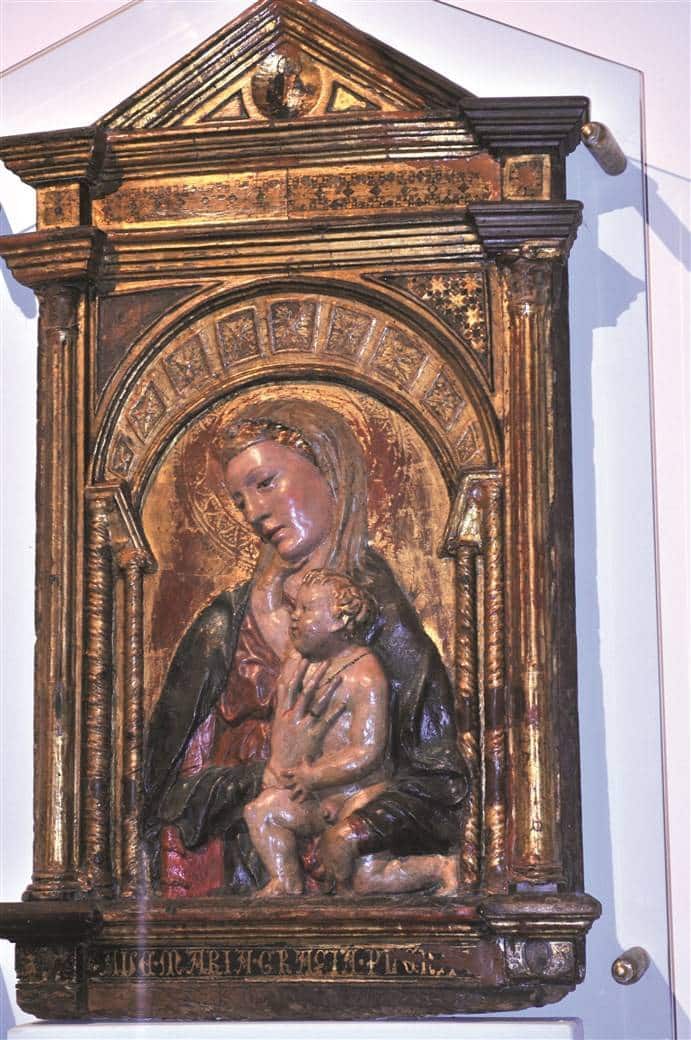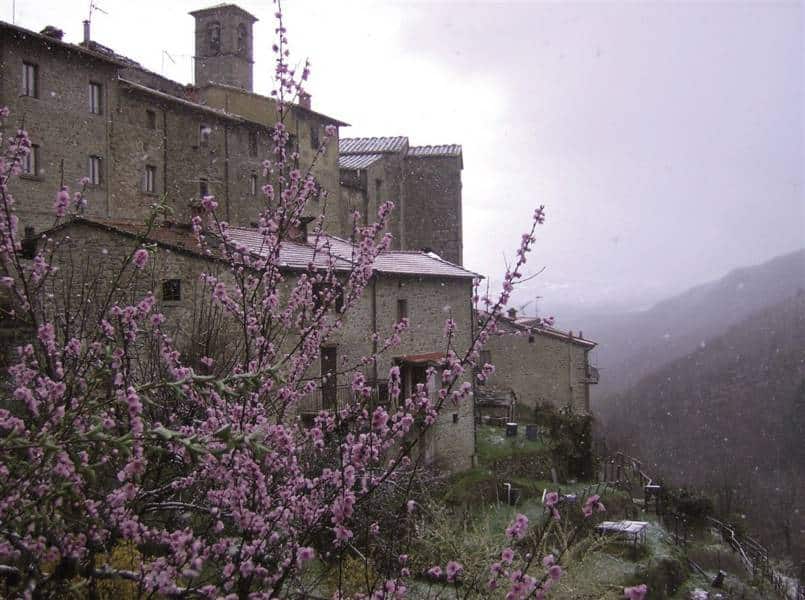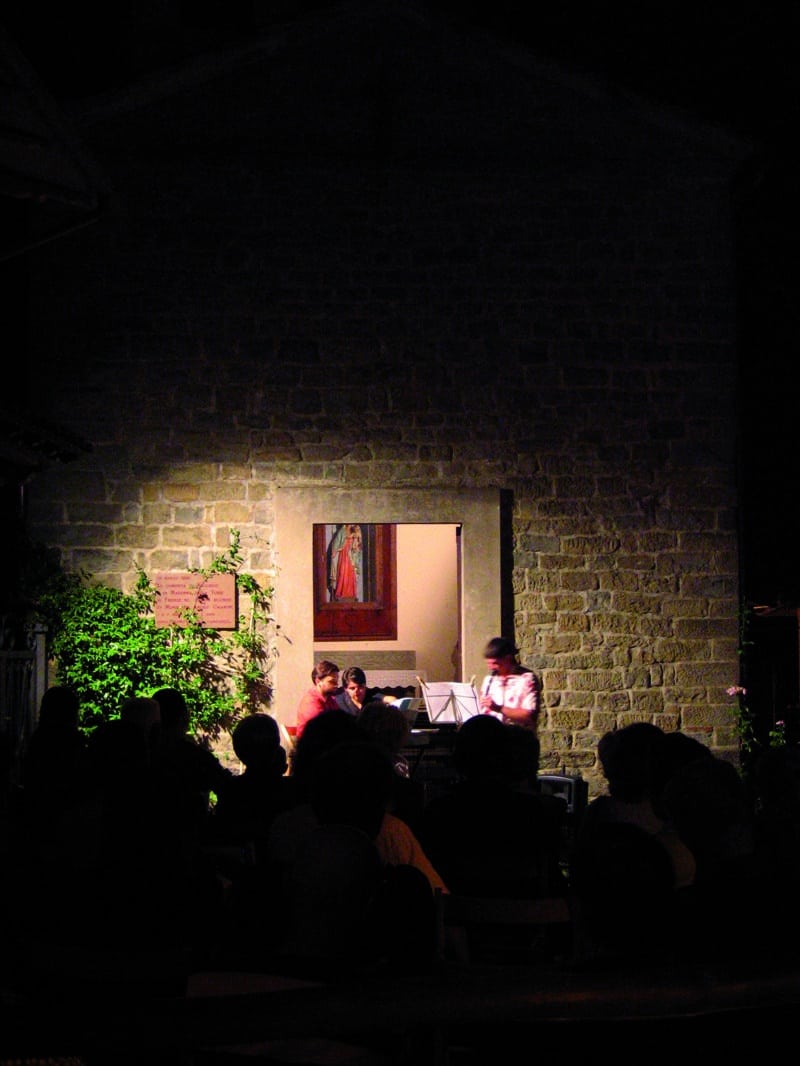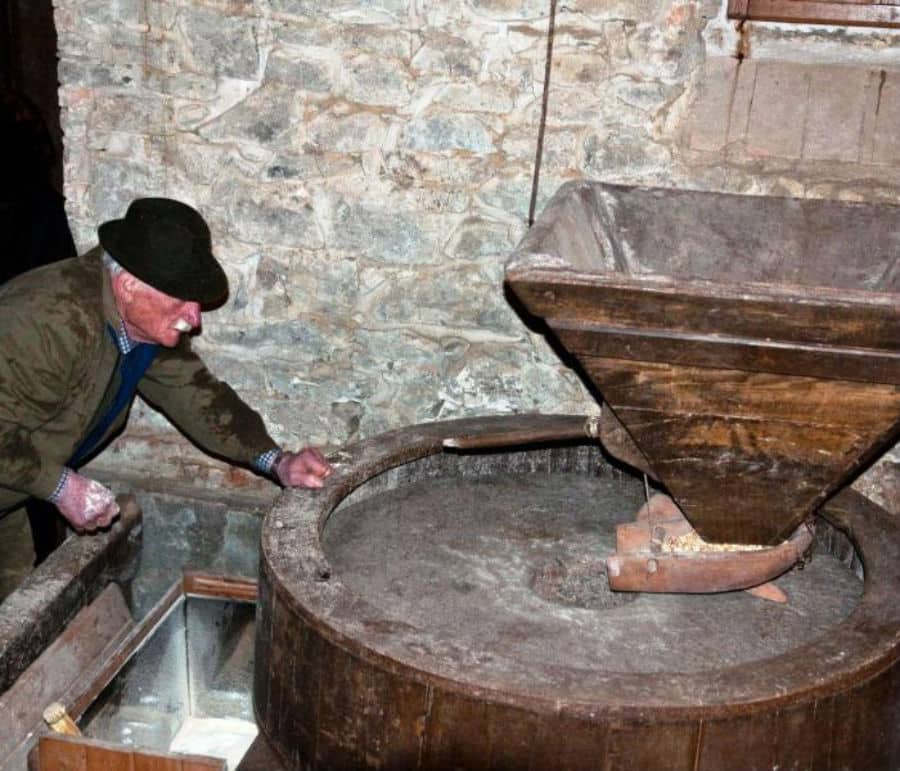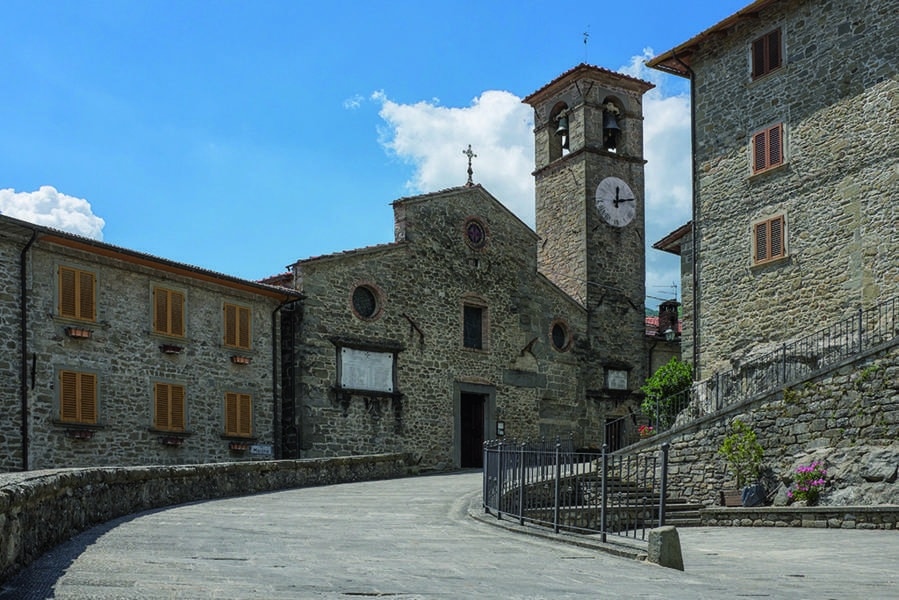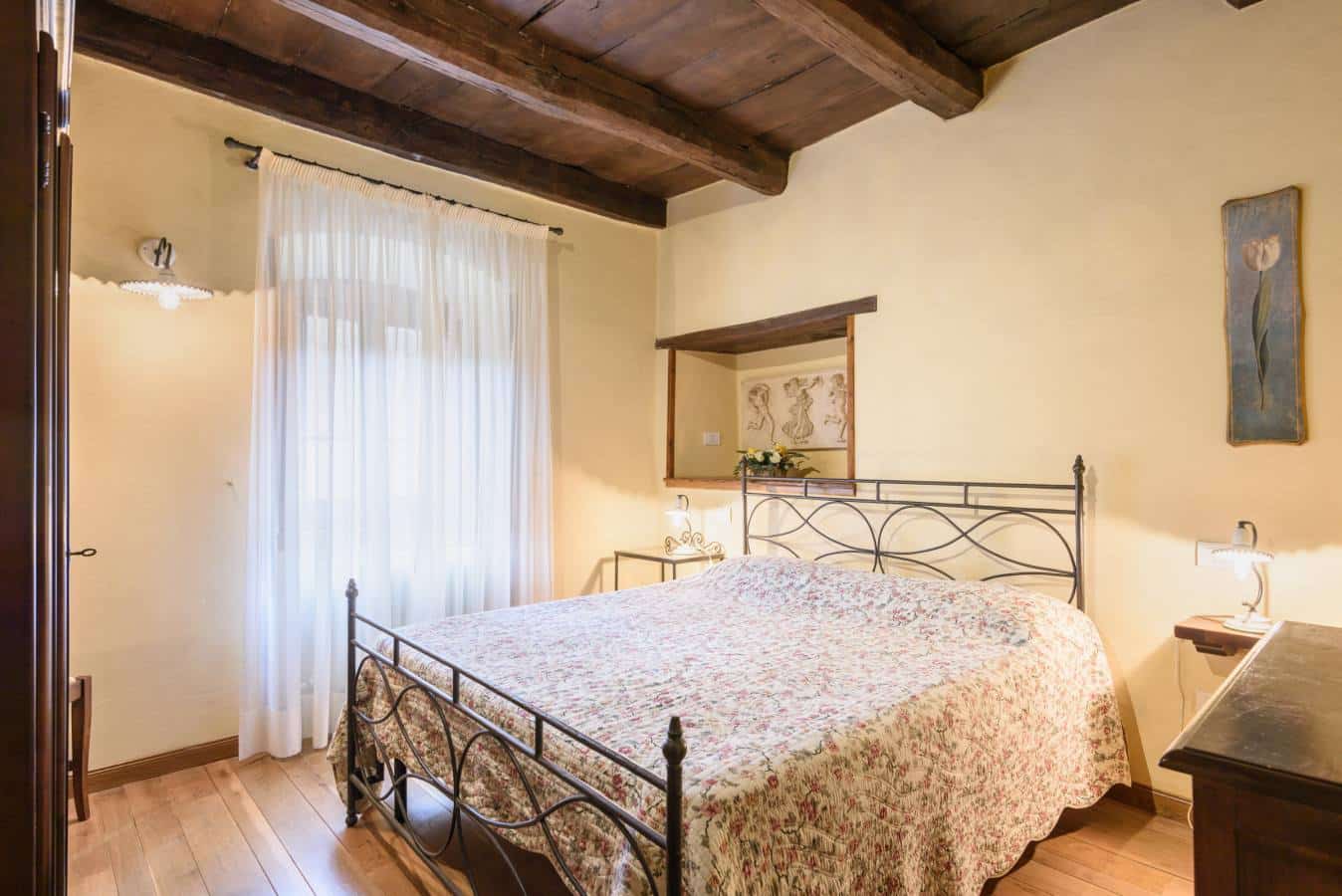Ortignano Raggiolo, a gem of rare beauty set in the setting of exuberant nature, tells the fascinating story of Ortignano and Raggiolo, two towns whose union took place in 1873 after centuries of conflicting dominations. This magical place, surrounded by a sea of chestnut forest, is rooted in the history and culture of the Italian people.
Be enchanted by the history of Ortignano Raggiolo
Mention of Ortignano dates back to 1247, taking its name from Hortinius, a Roman dignitary. Raggiolo, on the other hand, has been known since 967 as 'Ragiola,' deriving from the Latin 'radius,' meaning "boundary line." Its compelling history unfolds in the 13th century, when the settlement was under the jurisdiction of the Counts Guidi of Poppi, loyal to the Germanic Empire, and one of the most influential feudal dynasties. In the 14th century, the territory came under the bishopric of Arezzo, until it was dominated by the prevailing Florence in 1349.
Hidden treasures of Ortignano Raggiolo
Since 2015, Raggiolo has been shining in the spotlight, honored among Italy's Most Beautiful Villages. Its cobblestone streets accessible only on foot create the ideal atmosphere to immerse yourself in the Middle Ages of the Tuscan-Emilian Apennines. The authentic hospitality here is designed to make the welcome comfortable without compromising the authenticity of the experience.
Steeped in a sea of agricultural and pastoral traditions, Ortignano Raggiolo boasts the creation of the Chestnut Museum, a tribute to the harvesting and food use of chestnuts, fundamental to local communities. From its forests come the chestnuts that have nourished the local population.
The Church of San Michele, housed in the ancient palace of the Conti Guidi and adorned with fine 15th-century works, is another gem not to be missed. The impressive Gothic portal, embellished with the crest of the Arte della Lana, highlights the building's refined architecture.
Out-of-town trips: Discovering the neighboring region
Not far from Ortignano Raggiolo is Chiusi della Verna, an oasis of peace known for its Sanctuary of La Verna. This sacred place, where St. Francis of Assisi received the stigmata, is a popular pilgrimage site for devotees from all over the world.
Bibbiena, in the province of Arezzo, is a perfect starting point for hiking in the Casentino Forests National Park, one of the most unspoiled and silent places in Europe stretching between Tuscany and Emilia-Romagna.


